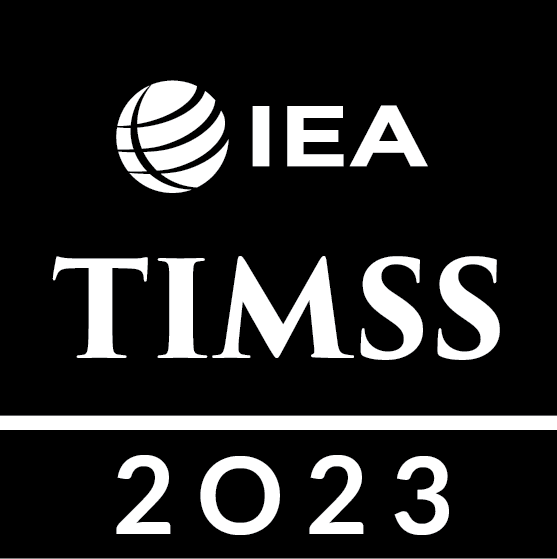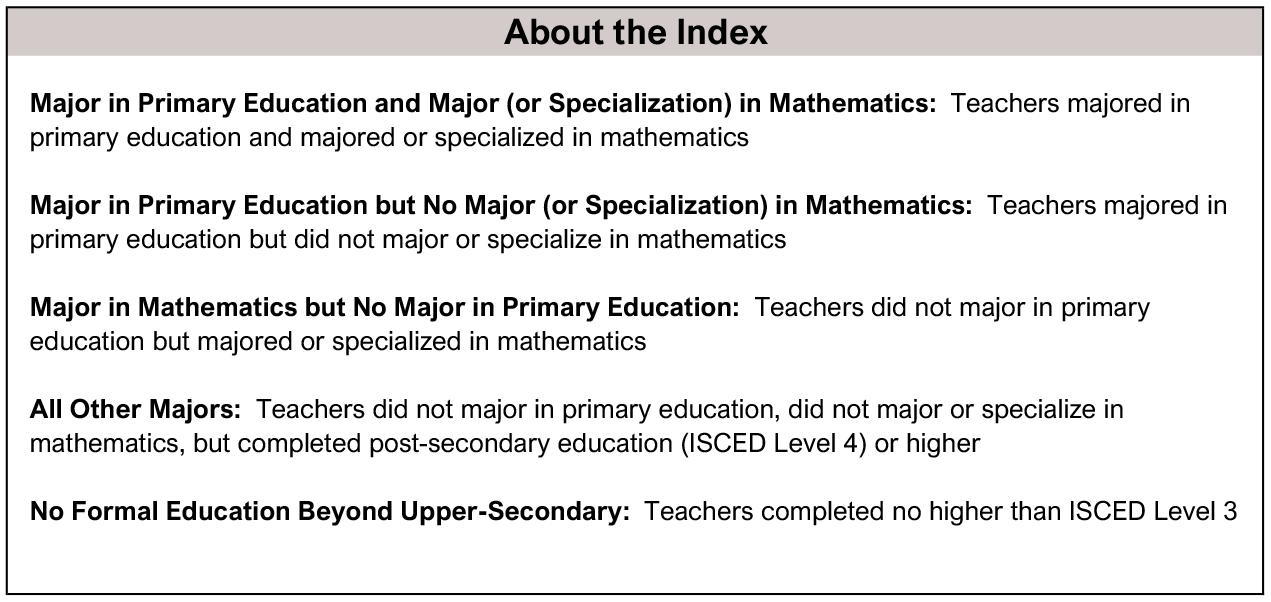Teachers Majored in Primary Education and Mathematics – Teachers’ Reports (Grade 4)
Classroom Environment
Teachers Majored in Primary Education and Mathematics
The TIMSS 2023 Teacher Questionnaire collected information about fourth-grade students’ mathematics teachers’ majors during post-secondary education. These are reported in four categories: major in primary education and major or specialization in mathematics, major in primary education by no major or specialization in mathematics, major in mathematics but no major in primary education, and all other majors (Exhibit 5.1.6). The small percentage of students whose mathematics teachers have no formal education beyond upper-secondary is also reported. Details about this index can be found in Supplement 3 of the TIMSS 2023 User Guide for the International Database. These percentages must be considered in the context of mathematics teacher preparation within countries. More details can be found in the TIMSS 2023 Encyclopedia.
Internationally, a large majority of fourth-grade students (88%) were taught mathematics by teachers who had a major or specialization in primary education, mathematics, or both (Exhibit 5.1.7). On average, 35 percent of fourth-grade students were taught mathematics by teachers with a major in primary education and a major or specialization in mathematics, 41 percent of students were taught by teachers with a major in primary education but no major or specialization in mathematics, and 12 percent of students were taught by teachers with a major in mathematics but not primary education. Small percentages of students internationally were taught mathematics by teachers with other majors (9%) or teachers with no formal education beyond upper-secondary (3%).
Students with teachers who majored in both primary education and mathematics and who majored in primary education but not mathematics had an average mathematics achievement of 504 internationally. Average mathematics achievement for students with teachers who majored in mathematics but not primary education (498) or had other majors (500). The small percentage of students with mathematics teachers who had no formal education beyond upper-secondary had the lowest average mathematics achievement (464).
Read More
Teachers Majored in Primary Education and Mathematics – Teachers’ Reports
Few or No Lessons
Some Lessons
Most Lessons
( ) Standard errors appear in parentheses. Because of rounding some results may appear inconsistent.
An “r” indicates data are available for at least 70% but less than 85% of the students.
An “s” indicates data are available for at least 50% but less than 70% of the students.
A dash (-) indicates comparable data not available.
A tilde (~) indicates insufficient data to report result.
Scroll Up

